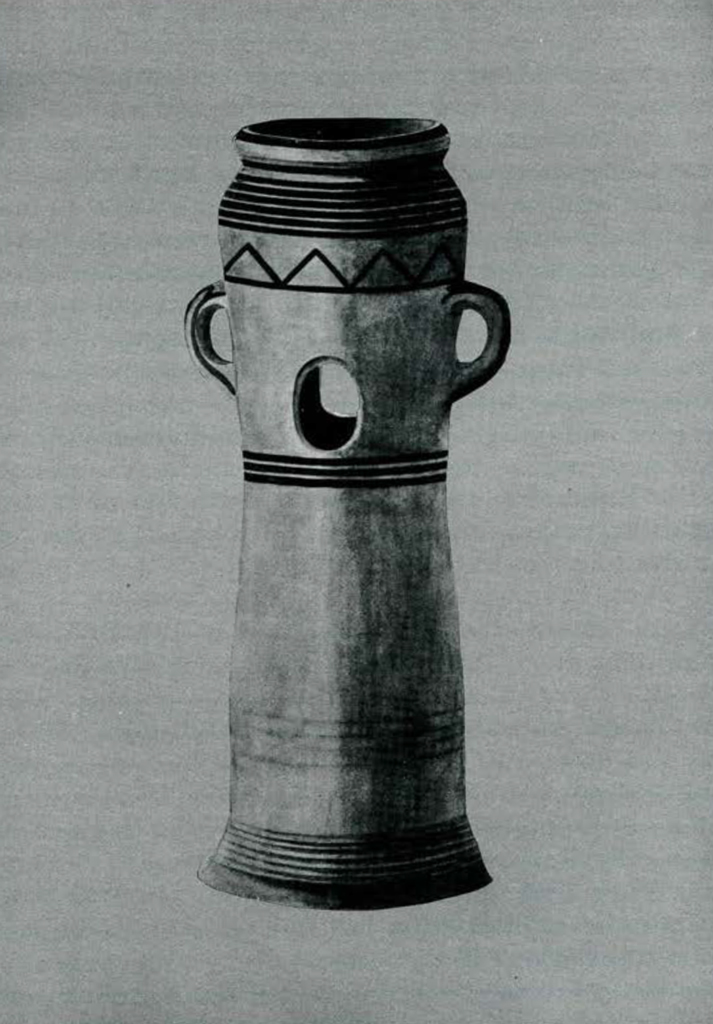
THE discovery at Tell Billa and Tepe Gawra of several interesting incense-burners, the most notable being the painted example now on exhibition on the upper floor of the Museum and illustrated in the Bulletin for December, 1931, calls attention once more to similar incense-burners from the Museum’s excavations at Beisan, Palestine, the Biblical Beth-shan. Two of these from the Rameses III level are reproduced in Plates VIII and IX. They both date from approximately 1200 B.C., thus being of somewhat later date, but having, in general, the same characteristics as the Tell Billa object.
Of the many incense-burners found at Beth-shan, the majority have representations of birds and serpents upon them. In a few cases, these birds are painted on the sides of the objects, as in the Billa example; in others, one of which is illustrated, the birds are small models placed in the apertures or on the rim and handles. The serpents are moulded, and usually confront the birds. Apertures are common on all of these objects, and are either triangular or oval in shape.

Museum Object Number: 29-103-845
It is a significant fact that most of the incense-burners were found in the Canaanite temples at Beth-shan, and it is certain that these objects were used in religious rites, or at least were a part of the temple furniture. We should expect any cult-object from Beth-shan to bear representations of serpents, for excavations at the site have shown that it was the center of a serpent cult in Palestine. Serpents were often associated with the goddess Ashtoreth, and the birds, which are probably doves, were a common symbol of the goddess. The theory has been advanced, however, that the serpent represents Tammuz, and the association of doves and serpents would then refer to the Ashtoreth-Tammuz legend of the ripening and revival of vegetation after its decay in winter. It is possible that these cylinders were used in sacred rites connected with agriculture, although one of the cylinders discovered by Dr. Speiser in Mesopotamia has a strainer attachment inside the vessel, which strongly indicates their use as incense-burners.
Another class of sacred pottery objects from Beth-shan is the shrine-houses which are also decorated with serpents and doves as well as with lions and human figures; the latter perhaps, being representations of Ashtoreth herself. One of these shrine-houses and an incense-burner are on exhibition in the First Palestine Room on the lower floor of the Museum.
A. J. T.

